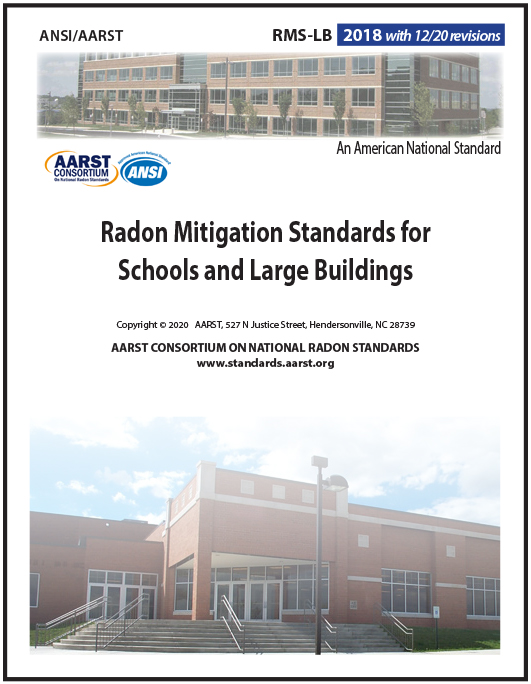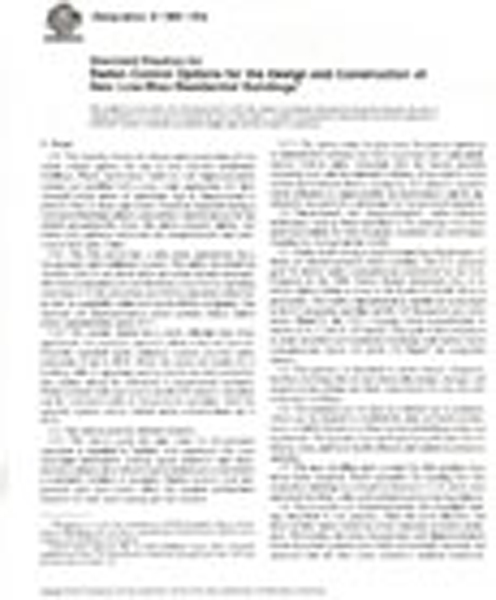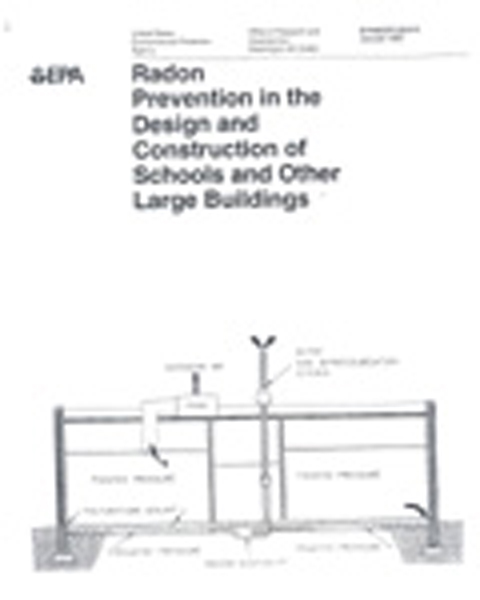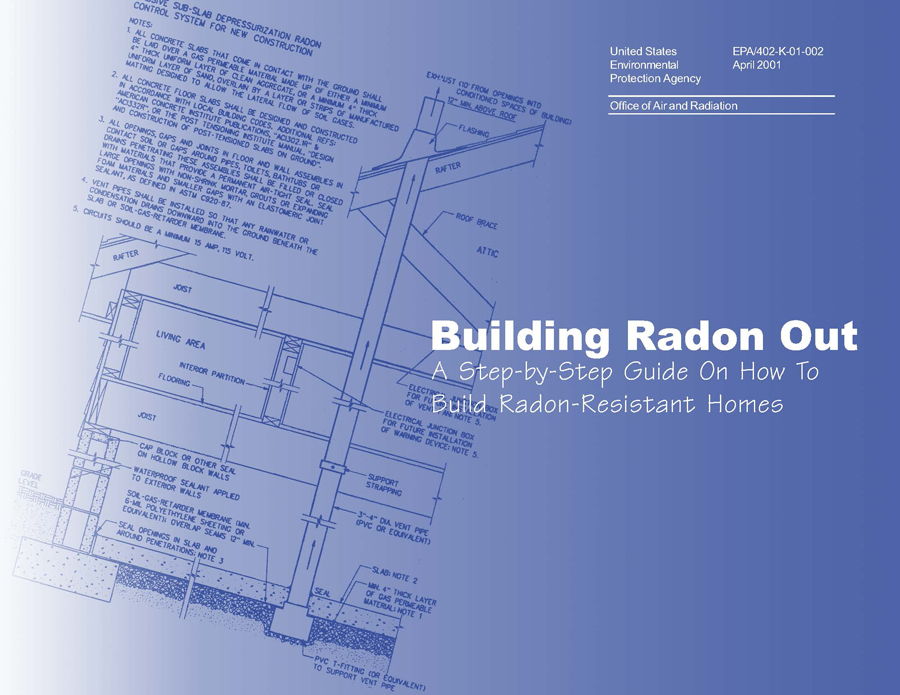What are the codes or standards for radon-resistant new construction?
For details on national radon standards, or standards that relate to new homes in your area, visit the websites of the three organizations listed below.
-
AARST-NRPP
-
ANSI-AARST Standard (RRNC-2020): Rough-In Of Radon Control Components In New Construction Of 1 & 2 Family Dwellings And Townhouses
This standard provides minimum requirements for the rough-In of radon control system
components in new dwelling units under construction. This standard is harmonized with ANSI/AARST CCAH, which additionally addresses requirements for verifying if radon concentrations are below the national action level and, if required, activation of radon control systems.
View online for free on AARST's website here: https://standards.aarst.org/RRNC-2020/index.html.
Purchase PDF copy here: https://webstore.ansi.org/Standards/AARST/ANSIAARSTRRNC2020
Purchase print copy here: https://aarst.org/product/rrnc-2020/
-
ANSI-AARST Standard (RRNC-2020): Rough-In Of Radon Control Components In New Construction Of 1 & 2 Family Dwellings And Townhouses
-
ANSI-AARST Standard (CCAH-2020): Reducing Radon In New Construction Of One & Two Family Dwellings And Townhouses
This standard provides minimum requirements for the rough-In of radon control system components in new dwelling units under construction. CCAH also includes minimum requirements for verifying if radon concentrations are below the national action level and, if required, activation of radon control systems. This standard is harmonized to compliment the standard designated as ANSI/AARST RRNC, which replicates construction activities for rough-In components only.
View online for free on AARST's website here: https://standards.aarst.org/CCAH-2020/index.html
Purchase PDF copy here: https://webstore.ansi.org/Standards/AARST/ANSIAARSTCCAH2020
Purchase print copy here: https://aarst.org/product/ccah-2020/
-
ANSI-AARST Standard (CC-1000-2018): Soil Gas Control Systems in New Construction of Buildings
This standard provides minimum requirements for the construction of any building intended for human occupancy, except for 1 and 2 family dwellings, in order to reduce occupant exposure to radon and other hazardous soil gases. It addresses the construction of buildings to be utilized for multifamily or congregate residential, educational or commercial occupancies.
View online for free on AARST's website here: https://standards.aarst.org/CC-1000-2018/index.html
Purchase PDF copy here: https://webstore.ansi.org/Standards/AARST/ANSIAARSTCC10002018
Purchase print copy here: https://aarst.org/product/cc-1000-2018/
-
ANSI-AARST Standard (RMS-LB-2018): Radon Mitigation Standards for Schools and Large Buildings
 This standard specifies practices, minimum requirements and general guidance for mitigation of radon in existing schools and large buildings, including both low-rise and high-rise schools and large buildings. The techniques addressed in this standard provide whole-building consideration yet also apply when implemented to portions of a building or individual occupied spaces.
This standard specifies practices, minimum requirements and general guidance for mitigation of radon in existing schools and large buildings, including both low-rise and high-rise schools and large buildings. The techniques addressed in this standard provide whole-building consideration yet also apply when implemented to portions of a building or individual occupied spaces.
View online for free on AARST's website here: https://standards.aarst.org/RMS-LB-2018/index.html
Purchase PDF copy here: https://webstore.ansi.org/Standards/AARST/ANSIAARSTRMSLB2018rev1220
Purchase print copy here: https://aarst.org/product/rms-lb-2018/
ASTM
-
Standard Practice for Radon Control Options for the Design and Construction of New Low-Rise Residential Buildings* << Withdrawn in 2017

of ASTM E1465-08a may be purchased at the ASTM Bookstore.
*ASTM E1465-08a; January, 2009.
-
IRC
- International Residential Code for One and Two Family Dwellings, Appendix F - Radon Control Methods
This document is only available online. To view each section, click on the corresponding heading.
-
EPA
-
 Radon Prevention in the Design and Construction of Schools and Other Large Buildings.
Radon Prevention in the Design and Construction of Schools and Other Large Buildings.
It is typically easier and much less expensive to design and construct a new building with radon-resistant and/or easy-to-mitigate features, than to add these features after the building is completed and occupied.Download a copy of the document from NSCEP | EPA 625-R-92-016, June 1994
-
-
EPA
-
 Building Radon Out: A Step-by-Step Guide on How to Build Radon-Resistant Homes.
Building Radon Out: A Step-by-Step Guide on How to Build Radon-Resistant Homes.
Describes why radon-resistant new construction should be used. Includes basic information about the health risks associated with radon exposure and how radon enters a home.Download a copy of the document from EPA | EPA 402-K-01-002, April 2001
-
You can also review the states and jurisdictions that require the use of these techniques at the National Conference of State Legislatures (NCSL) Radon webpage (link is external).



